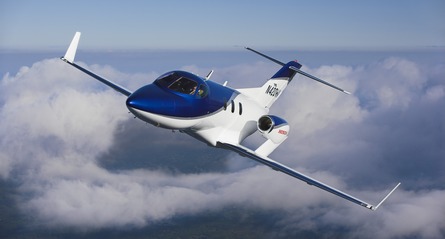Some of the most qualified engineers at Cessna, Gulfstream and Hawker Beechcraft are being offered jobs at Honda Aircraft, which is ramping up in anticipation of the start of flight-testing for the all-composite HondaJet just as other manufacturers cut their head count.
Honda Aircraft says it is in the process of hiring 100 engineers and in particular is looking for people with experience in new aircraft design, development and certification. The Greensboro, North Carolina-based manufacturer plans to start a four-aircraft flight-test and certification programme for its new very light jet in the third quarter.
Honda says a "core team" has begun building the first conforming aircraft, with several subassemblies including the wing and empennage having now been received from suppliers. "We're anticipating first flight in late summer or early fall," the company says.
Honda, which employs 300 people, says so far it has attracted talent from California, Georgia, Kansas, Texas and Washington and continues to recruit staff in these aircraft manufacturing hotbeds as it grows its headcount to 400 this year. Georgia is the home to Gulfstream, while Cessna and Hawker Beechcraft are based in Kansas, with both companies having announced significant job cuts in recent months.
 |
|---|
© Honda |
Honda says it has to look outside North Carolina for aeronautical engineers with experience in certificating new aircraft because this kind of expertise "tends to be concentrated in areas where the infrastructure is built up. Greensboro tends to be in its infancy with that."
Honda is now developing a new $100 million facility at Greensboro's Piedmont Triad International airport. The first phase of this facility, a headquarters building housing the company's sales, marketing and administration staff, opened last May. In December a 18,600m² (200,000ft²) research and development building was completed.
The third and final phase of the project, featuring a production facility, will open in 2010. Honda plans to start hiring production staff early next year as it prepares for the start of production in late 2010, which is also when the HondaJet is scheduled to be certificated and delivered to the first customer. Honda says it aims to eventually ramp up to production rate of 80-100 aircraft a year, which is needed for it to achieve the production efficiencies employed at Honda's automotive division.
Honda claims sales of the HondaJet have remained robust despite the economic downturn and it has not been affected by the woes of the air taxi market because its orders are all from owner operators and small businesses. Honda will not disclose how many orders it has secured, but says sales spiked last year, initially because an increase in fuel prices prompted owners of larger business jets to look for smaller more fuel efficient models.
While fuel prices have come down, Honda says the slow economy is prompting jet owners to seek savings by switching to smaller, more efficient jets. "People are a bit more cautious. They want more fuel efficiency, but don't want to give up space or speed," it says.
The HondaJet will be able to cruise at up to 420kt (780km/h) and offers a six-seat cabin with a lavatory. Honda claims the HondaJet has the cabin and performance of a light jet, but at a purchase price and fuel efficiency of a very light jet. "Demand is quite strong. We're very happy with the orders we have," Honda says, adding "the retention rate [for existing customers] is also quite high".
Source: Flight International























